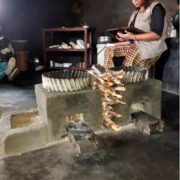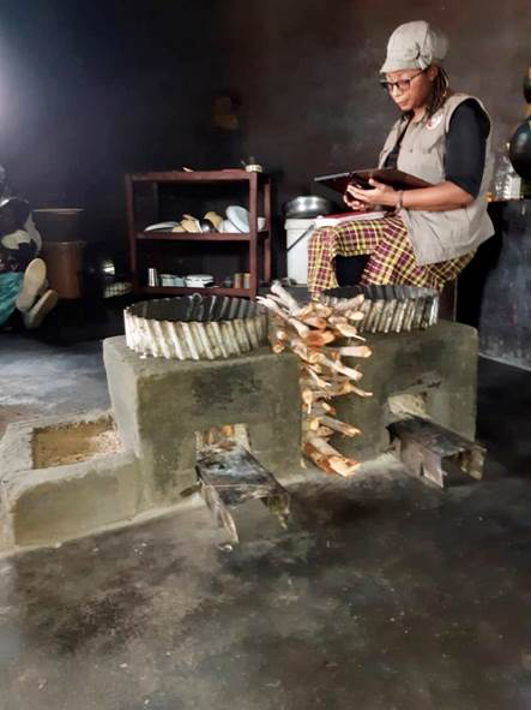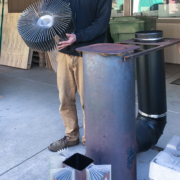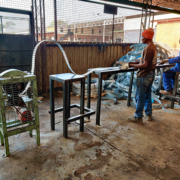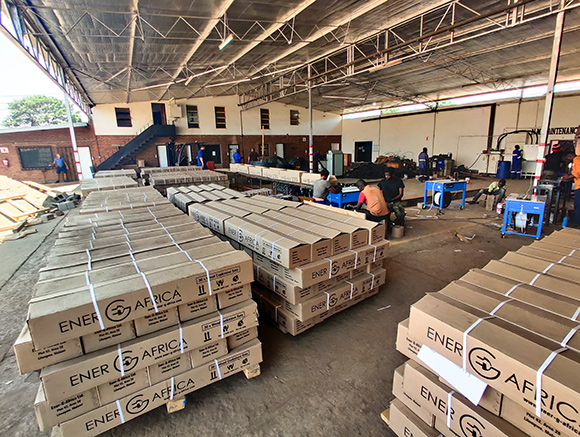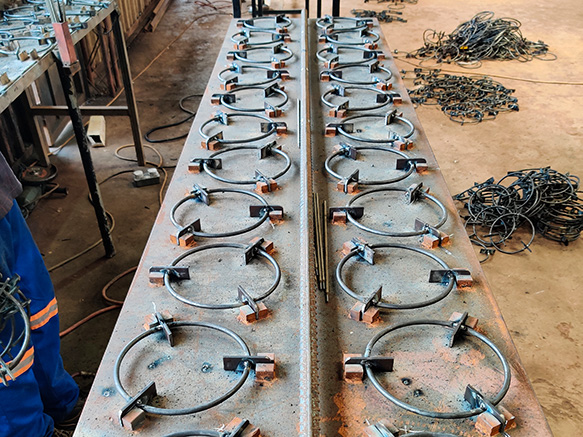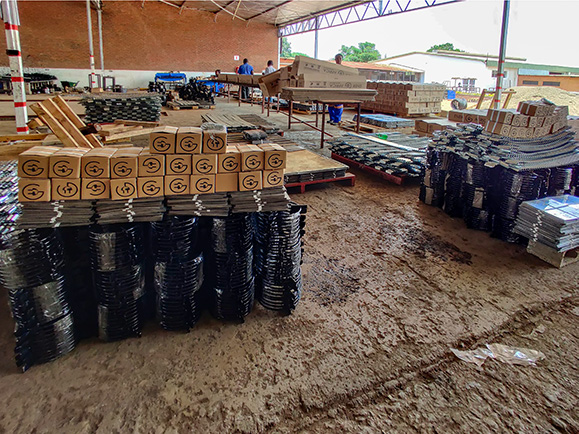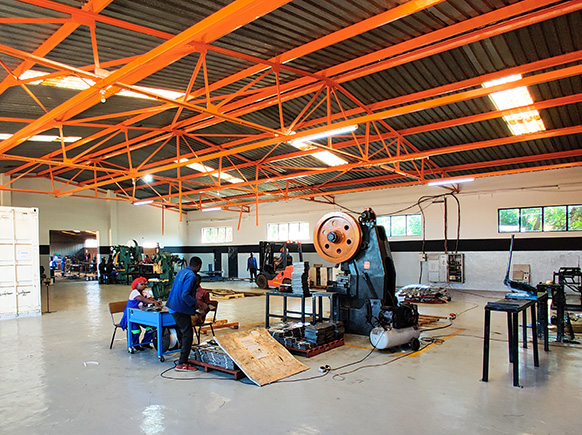Detailed Observations with the LEMS Emissions Hood
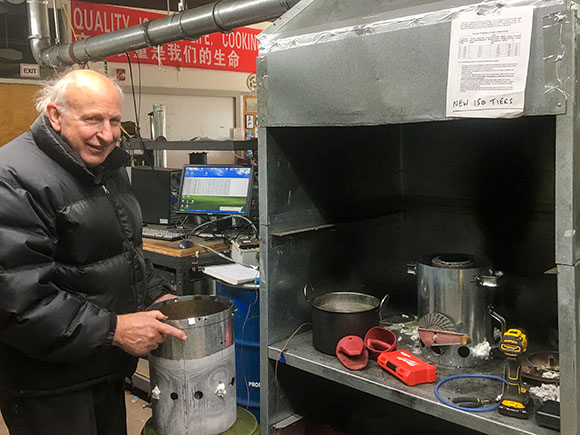
Having an emissions hood allows ARC to make more detailed observations. We try to do one ISO 19867 test every day, establishing an in-house culture of data driven inquiry. Now, having a hood isn’t necessary for creating amazing stoves. Larry Winiarski, Tom Reed, Paul Anderson, Kirk Harris, and many other people have spent happy hours tweaking prototypes that then worked better and better. But when you get to the point where it’s hard to see the smoke, visual inspection doesn’t work as well. In the modern world, health requirements are violated by fairly invisible amounts of PM2.5. Of course, the same thing goes for CO which is odorless and invisible.
That’s why we offer free access to serious stove developers. Kirk Harris recently visited the lab to tune up his latest TLUD. We have a nice, warm cabin for him and daily access to one of our two emissions hoods. The cafeteria is open and Kirk brings food to prepare. If we are lucky, we hear him playing his flute. Dale Andreatta makes an almost annual visit and then likely climbs some mountain and goes somewhere to watch trains.
Steps of scientific inquiry
- Complete background research into the topic
- Observe the natural process
- Make a hypothesis based on the observations and test it
We’ve recently added 4 oxygen sensors and 4 temperature probes to the data generated every second for greater depth of detail. Detailed observations help to see if one set of information had an effect on another. For example, when temperatures rose at 3” up from the floor of the combustion chamber did CO or PM2.5 change at the same time? Was a significant effect on CO or PM2.5 seen above a certain temperature? What happened with the temperature probe data taken at 4” up from the floor? And more and more. The process of learning is data driven which makes a black box theorist happy.
In so many ways, the detailed observation of what is happening in a biomass stove is in its infancy. Establishing a culture of daily data generation at our lab (3 hours) is getting us closer to having “observed the natural process.” And, it’s Christmas fairly frequently when a statistically significant relationship is observed.




